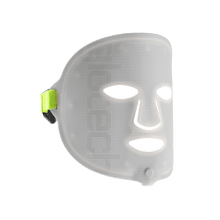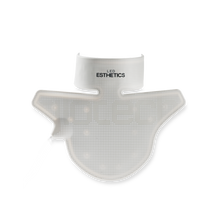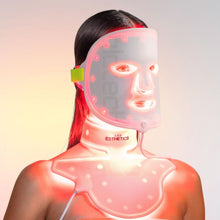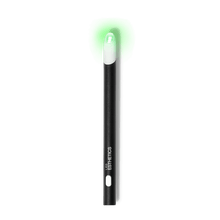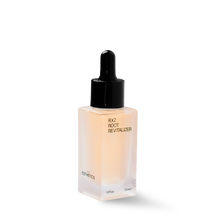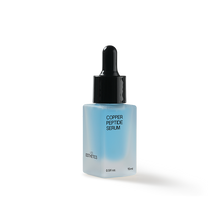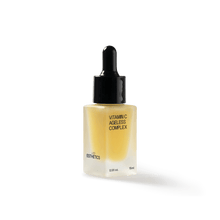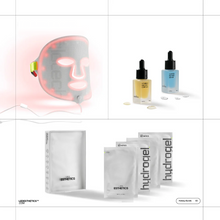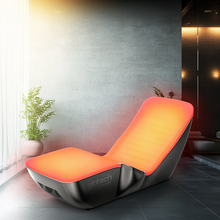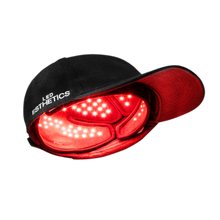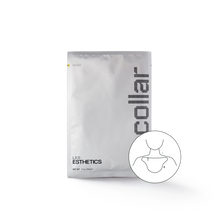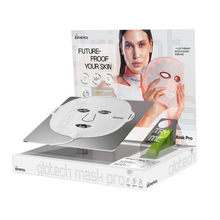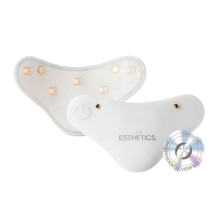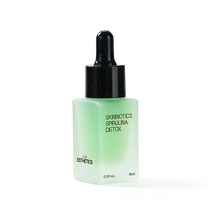
Red Light Therapy for Autoimmune Skin Conditiions
|
|
Time to read 5 min
|
|
Time to read 5 min
LED-SCIENCE [10-21-2025]
BY MADISON CARTER
Living with autoimmune skin conditions can be challenging, affecting not just appearance but daily comfort and confidence. Flare-ups can appear suddenly, causing redness, dryness, or irritation that disrupts routines and even social interactions. Many people find themselves constantly adjusting skincare or lifestyle choices to accommodate unpredictable skin reactions.
For those navigating autoimmune skin concerns, understanding triggers and maintaining a protective routine is crucial. Environmental factors, diet, stress, and even minor skin irritations can intensify symptoms, while a weakened barrier makes the skin more reactive. Recognizing these patterns is the first step toward finding solutions that support resilience and reduce the frequency and severity of flare-ups.
Autoimmune skin conditions arise when the body’s immune system mistakenly attacks its own healthy skin cells. This overreaction leads to inflammation, redness, and tissue damage, which in turn weaken the skin’s natural barrier. The result is a cycle where irritated, inflamed skin struggles to repair itself, leaving it sensitive and prone to further flare-ups. Common examples include psoriasis, lupus, rosacea, and eczema, each presenting unique symptoms but driven by similar underlying immune dysfunction.
Traditional approaches often focus on surface-level relief through steroid creams, antihistamines, or immunosuppressants, which can soothe visible irritation but do not address the underlying cellular imbalance. Targeted therapies, including advanced light-based devices, aim to go deeper by supporting cellular repair, regulating immune responses, and reducing inflammation at its source. These methods help restore barrier strength and skin resilience, offering a more sustainable path to healthier, calmer skin over time.
Red light therapy uses wavelengths ranging between 630–850 nanometers, a powerful spectrum that penetrates deep into the skin’s tissue. Once absorbed, these wavelengths stimulate the mitochondria, the tiny “powerhouses” inside your cells, to produce more ATP (adenosine triphosphate). ATP is essential for energy, repair, and regeneration, three things skin affected by inflammation desperately needs.
This process doesn’t just make cells more active, it helps them function smarter. By increasing cellular energy, red light encourages better communication between the skin and the immune system. Overactive immune cells begin to self-regulate, inflammation subsides, and the skin can return to its natural state of balance. For autoimmune skin, this is crucial. It helps slow down the body’s “overreaction” that drives redness, itching, and flaking.
Another key benefit is how red light influences circulation. Improved blood flow delivers oxygen and nutrients more efficiently, supporting faster healing and barrier repair. Over time, users often notice fewer flare-ups, faster recovery from irritation, and more resilient skin overall. Unlike UV light, red light is completely non-damaging and carries no risk of DNA mutation, making it a safe, gentle long-term solution for sensitive skin.
For anyone managing chronic inflammation or autoimmune skin, the goal isn’t just symptom control, it’s achieving real, sustainable comfort. Red light therapy offers that by addressing the root biological imbalances rather than masking visible irritation.
When used consistently, red light therapy can lead to noticeable improvements in tone, comfort, and barrier strength. Many users report that their skin feels less reactive and more hydrated within weeks. Clinical studies also show measurable decreases in inflammatory markers, reinforcing what aestheticians and dermatologists have observed firsthand: red light therapy helps the skin heal from within.
Key Benefits of Red Light:
For those with psoriasis or lupus-related rashes, these benefits can mean shorter flare durations and longer remission periods. The more consistent the routine, the better the cumulative results, because this treatment strengthens skin from the foundation up.
Start by cleansing your skin to remove oils, creams, or serums that could block light penetration. Sessions should last about 10–15 minutes, ideally three to five times per week. A consistent red light therapy routine matters far more than intensity. Many users find that short, frequent sessions yield better long-term results than occasional long treatments.
While professional clinics offer targeted red light therapy, at-home devices such as LED face masks or handheld wands now deliver professional-grade wavelengths safely and effectively. Choose FDA-cleared models that use medical-grade LEDs, these ensure optimal light energy delivery without heat or irritation.
Consistency is essential. Red light therapy isn’t an overnight fix, but over several weeks, inflammation subsides, sensitivity diminishes, and overall tone improves. For those with conditions like rosacea or eczema, this gentle process helps the skin “unlearn” its reactivity, restoring calm, hydrated balance.
To maximize the effectiveness of your red light therapy, pair it with skincare that reinforces your barrier and reduces irritation. When your post-treatment products complement the therapy, they amplify results, helping the skin retain moisture and stay calm between sessions.
Best Supportive Ingredients
Avoid harsh exfoliants, strong retinoids, and fragranced formulas immediately after therapy. These can undo progress by overstimulating the skin. Instead, focus on calm, hydrating products that nurture and protect. This synergy is what delivers the best visible and long-term improvement.
Over time, combining red light therapy with gentle, barrier-repair skincare can transform your complexion’s texture, resilience, and comfort. The skin begins to look less inflamed, feel more supple, and respond better to all other parts of your skincare routine.
Red light therapy has gained recognition not just as a beauty tool but as a true therapeutic solution for chronic inflammation. For autoimmune conditions, where inflammation is constant and recurring, this approach offers the ability to calm the immune system naturally, without the side effects of steroids or immunosuppressants.
The science is clear: wavelengths in the red and near-infrared spectrum influence how cells behave. They promote repair, balance immune activity, and improve microcirculation, three factors that play a direct role in controlling autoimmune skin symptoms.
The LED Esthetics Glotech™ Mask Pro and Glotech™ Collar are leading examples of safe, medical-grade technology for consistent at-home use. Their flexibility and clinical-grade power output make them ideal for managing inflammation-prone skin with confidence and comfort. Ultimately, red light therapy empowers you to take control of your skin health.

